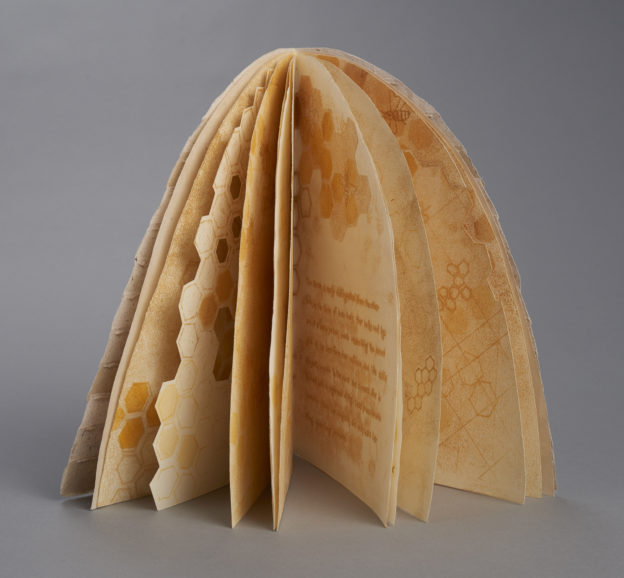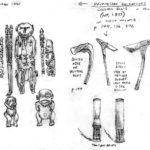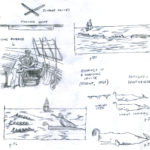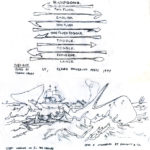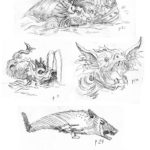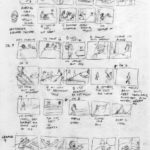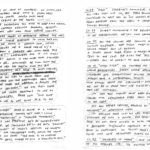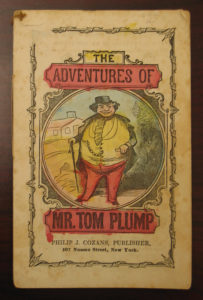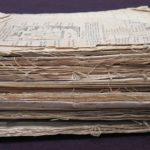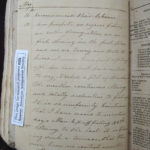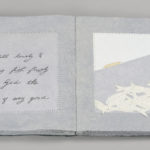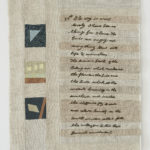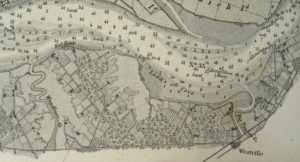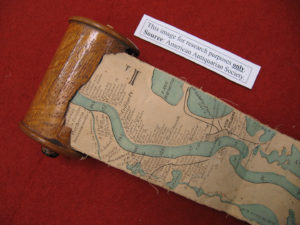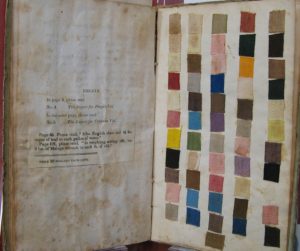This week we continue our Artists in the AAS Archive series. This installment offers a spotlight on four past fellows: poet James Arthur; poet and nonfiction author Christopher Cokinos; Cartoonist R. Sikoryak; and artist Stephanie Wolff.
This series is part of our celebration of the 25th anniversary of Artist fellowships at the American Antiquarian Society. More information about these programs may be found at the following: https://www.americanantiquarian.org/artistfellowships.
James Arthur
James Arthur reads his poem “On a Portrait Bust in Worcester, Massachusetts,” written while he was a Jay and Deborah Last Fellow at the American Antiquarian Society in January 2018.
The poem was inspired by an anonymous marble portrait bust acquired on behalf on the Antiquarian Society in 1881. “On a Portrait Bust in Worcester, Massachusetts” appears in Arthur’s second poetry collection, The Suicide’s Son, which was published by Véhicule Press in 2019.
James Arthur’s first book, Charms Against Lightning, was published in 2013. Arthur has received multiple fellowships including a Hodder Fellowship, a Stegner Fellowship, the Amy Lowell Travelling Poetry Scholarship, a Fulbright Scholarship to the Seamus Heaney Center in Northern Ireland, and a Visiting Fellowship at Exeter College, University of Oxford. He also teaches in the Writing Seminars at Johns Hopkins University.
More information about James’ work and upcoming events may be found on his website: http://www.jamesarthurpoetry.com/.
Christopher Cokinos
When I was an undergraduate at Indiana University I was awed by the size and scope of the Main Library. I marveled at the huge foyer and the sprawling card-catalog. After I graduated, I had a couple of jobs in the library system and briefly considered a library science degree. Turns out, I loved libraries. Even after moving to Tucson, I returned to use the IU Library while I began to research the curious natural histories of extinct North American birds. That journey had started along the Kansas River when I saw what turned out to be a pair of black-hooded conures being chased by a hawk. They escaped the bird of prey just as they had escaped a cage somewhere—or perhaps they’d been deliberately released? In any case, as I learned about such exotic birds—they certainly don’t belong in Kansas—I discovered that a settler girl a century prior had stood more or less in that same spot and had seen native Carolina Parakeets, bright green and orange birds that had populated the eastern third of North America and were tough enough to endure snow storms. They were not, however, tough enough to endure human beings. They were extinct.
I was captivated by their story and, soon, those of other species, such as the Passenger Pigeon and the Ivory-billed woodpecker. Often returning to Indiana to visit family, I made trips to the IU library, borrowed a book cart and found reams of material on these creatures. But when I saw a notice in Poets & Writers for a creative fellowship at the American Antiquarian Society I knew I had to apply. I was stunned to be accepted. And delighted. There I would find gems.
Those summer weeks in Worcester were a mixture of discipline and awe. Each time I stepped in the reading room, I felt the gravity of the collections—all this history gathered, cataloged and shelved, the magic of knowledge kept. I worked harder than I had ever worked before, reading newspaper accounts of the flocks of Passenger Pigeons (millions and billions of birds darkening the sky for hours, even days) and lingering over the color illustrations in Alexander Wilson’s American Ornithology. It was there he told of capturing an irate Ivory-bill and securing it in his hotel room, only later to find the bird had trashed the place. They are big woodpeckers, after all.
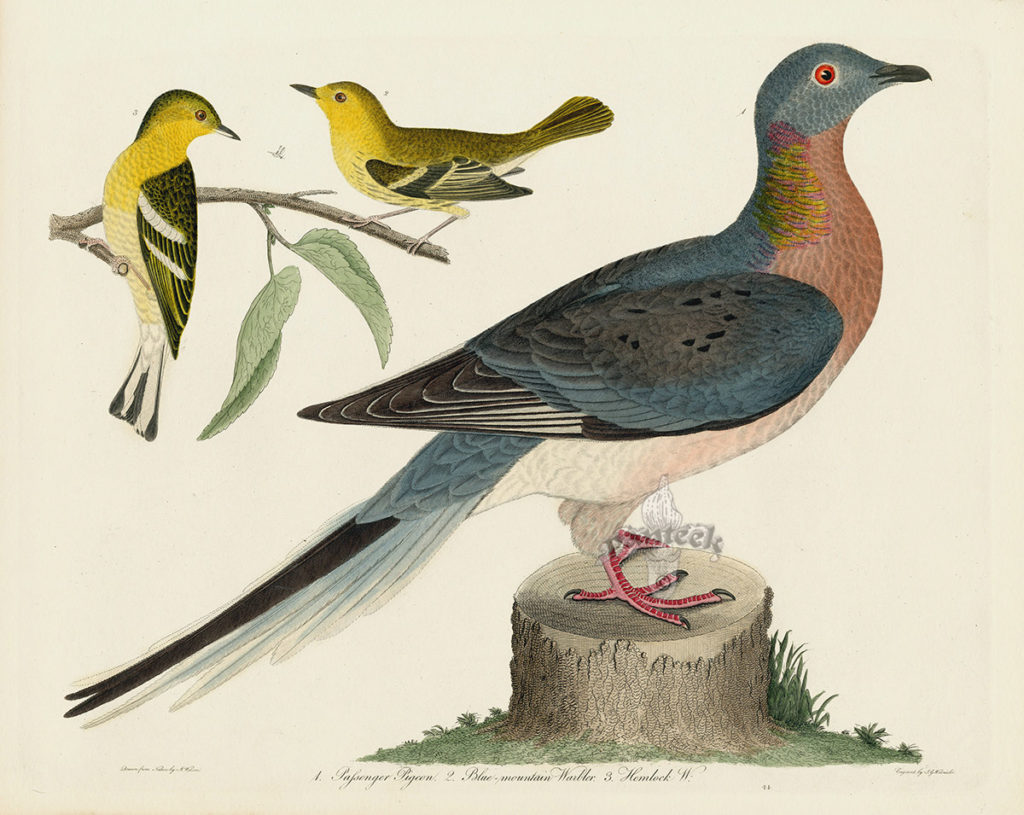 The greatest surprise should not have been a surprise. Many of these birds were consumed as part of the wild-game market, feeding not only local towns but distant, growing cities. The AAS librarians pointed me to the cookbook collection. It was there I found recipes for cooking Passenger Pigeons. It was there I learned that servants in Boston were tired of having to eat so much Heath Hen—the eastern subspecies of the Greater Prairie Chicken. The cookbooks made the lives of these vanished birds more real than anything else. They had been here, they had been taken for granted, they had been part of the domestic lives of countless of Native and European Americans. What I found at the AAS immeasurably enriched my book Hope Is the Thing with Feathers: A Personal Chronicle of Vanished Birds. The AAS was so important to this project that, when the time came to do the book launch, it happened right there in the reading room where I had spent so many rewarding hours. I still have the mini-poster announcing the event.
The greatest surprise should not have been a surprise. Many of these birds were consumed as part of the wild-game market, feeding not only local towns but distant, growing cities. The AAS librarians pointed me to the cookbook collection. It was there I found recipes for cooking Passenger Pigeons. It was there I learned that servants in Boston were tired of having to eat so much Heath Hen—the eastern subspecies of the Greater Prairie Chicken. The cookbooks made the lives of these vanished birds more real than anything else. They had been here, they had been taken for granted, they had been part of the domestic lives of countless of Native and European Americans. What I found at the AAS immeasurably enriched my book Hope Is the Thing with Feathers: A Personal Chronicle of Vanished Birds. The AAS was so important to this project that, when the time came to do the book launch, it happened right there in the reading room where I had spent so many rewarding hours. I still have the mini-poster announcing the event.
But I just didn’t learn about extinct birds at the AAS. I learned to love archival work, recovering lost stories, forgotten voices. When I next wrote a book about meteorites and meteorite hunters, I delved not into a library but a couple of filing cabinets that then contained the papers of Harvey Nininger, a professor at a small college in Kansas who quit his job during the Depression in order to hunt meteorites. He changed the course of science. Working with disorganized files stuck in a tiny office was a far cry from the ritualistic work of encountering rare books, manuscripts and newspapers at the AAS. But the reverence I learned there carried over to my meteorite research and beyond.
Now writing a series of essays about the Moon, I have encountered the stories of female astronomers who worked against multiple obstacles as they attempted to chronicle possible, visible changes on the lunar surface, a highly controversial field even today. Sitting in the living room of one of the daughters of these astronomers, surrounded by papers, ephemera and photographs, I summoned the awe and discipline I felt at the AAS. This past year I even helped the University of Arizona Special Collections organize the papers of a pioneering lunar astronomer.
The fellowship at the AAS not only helped me write my book on extinct birds. It has paid forward as I continue dig into and savor the necessary art of historical nonfiction research: bringing to life on the page what is gone but must be remembered.
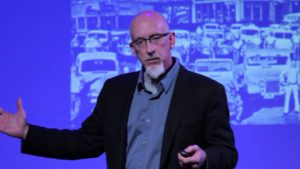 Christopher Cokinos is a Professor of English at the University of Arizona, where he teaches creative writing, science fiction literature and science-communication courses. He is the author of Hope Is the Thing with Feathers: A Personal Chronicle of Vanished Birds and The Fallen Sky: An Intimate History of Shooting Stars, among other works. His co-edited anthology, with Julie Swarstad Johnson, Beyond Earth’s Edge: The Poetry of Spaceflight, is forthcoming in October from the University of Arizona Press. He was a Visiting Fellowship for Historical Research by Creative and Performing Writers and Artists at the American Antiquarian Society in 1998.
Christopher Cokinos is a Professor of English at the University of Arizona, where he teaches creative writing, science fiction literature and science-communication courses. He is the author of Hope Is the Thing with Feathers: A Personal Chronicle of Vanished Birds and The Fallen Sky: An Intimate History of Shooting Stars, among other works. His co-edited anthology, with Julie Swarstad Johnson, Beyond Earth’s Edge: The Poetry of Spaceflight, is forthcoming in October from the University of Arizona Press. He was a Visiting Fellowship for Historical Research by Creative and Performing Writers and Artists at the American Antiquarian Society in 1998.
Robert Sikoryak
I received an Artist Fellowship from AAS in 2006, to research Moby Dick as well as other works by Herman Melville. I’m a cartoonist who adapts classic literature and other texts into comics and graphic novels, in the styles of famous cartoons. Many of my short stories were collected in the book Masterpiece Comics, and I’m working on a sequel that will contain more Melville adaptations, including an extended Moby Dick retelling.
One of the pieces inspired by my fellowship experience was this parody comic book ad for the “Pequod Whaling Ship.” In addition to Moby Dick, it is inspired by an actual 1960’s comic book ad for a Polaris submarine model. It was first published in my book, Masterpiece Comics (2009).
 Another was an adaptation of Melville’s Bartleby the Scrivener drawn in the style of Scott Adams’ daily comic strip Dilbert. An excerpt is shown here. It was first published in the newspaper The Cartoon Crier (2012).
Another was an adaptation of Melville’s Bartleby the Scrivener drawn in the style of Scott Adams’ daily comic strip Dilbert. An excerpt is shown here. It was first published in the newspaper The Cartoon Crier (2012).
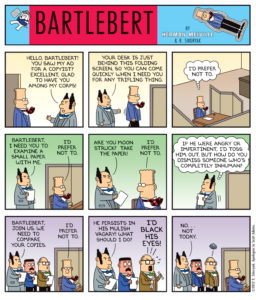 While my comics are irreverent and combine elements of high and low culture, they are also scrupulously researched and very faithful to their source materials.
While my comics are irreverent and combine elements of high and low culture, they are also scrupulously researched and very faithful to their source materials.
Much of my time during the fellowship was spent researching the diverse subjects described in Moby Dick, such as whaling, indigenous peoples, and life in New England. Illustrated books and prints that were created in the mid 19th century were the most useful for my purposes. I made many drawings based on the illustrated materials that were available, and I continued to sketch out ideas for my narrative.
Here are some early notes and sketches for my adaptation.
The majority of my time was spent examining these non-fiction materials. But I was also very struck by the many adaptations of Moby Dick created in the last 100 years, some of which were represented in the AAS collection. One amusing example was the book Moby Dick: Photoplay Title: The Sea Beast (1925). It features photographs from the silent film The Sea Beast, a very loose retelling of Melville’s book that radically diverges from his plot. The story was transformed into a romance with a happy ending. Although I don’t take many liberties when adapting the plot of a particular novel, it’s always very instructive or entertaining to see how others do it.
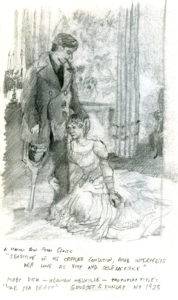 In addition to the rare books and prints that were available, it was very inspiring to see other printed ephemera in the collection. In particular, I loved finding the tiny, hand colored comic strip pamphlet, The Adventures of Mr. Tom Plump (circa 1855). Beyond the charming drawing and irreverent text, it was a rather heartwarming find. Comic books have often been seen as a disposable, trivial medium, so it was reassuring to see this fragile booklet preserved with the same care as the rest of the materials at AAS.
In addition to the rare books and prints that were available, it was very inspiring to see other printed ephemera in the collection. In particular, I loved finding the tiny, hand colored comic strip pamphlet, The Adventures of Mr. Tom Plump (circa 1855). Beyond the charming drawing and irreverent text, it was a rather heartwarming find. Comic books have often been seen as a disposable, trivial medium, so it was reassuring to see this fragile booklet preserved with the same care as the rest of the materials at AAS.
Cartoonist R. Sikoryak’s latest book is Constitution Illustrated, a graphic novel adaptation drawn in the styles of over 100 American comics from the past 120 years. His earlier works include Masterpiece Comics, Terms and Conditions, and The Unquotable Trump. His illustrations have appeared in The New Yorker, The New York Times Book Review, The Nation, The Onion, and MAD. Sikoryak teaches at Parsons School of Design and The Center for Cartoon Studies. Since 1997, he’s presented his live comics performance series, Carousel, around the United States and Canada. He lives in New York City with his spouse, Kriota Willberg.
Sikoryak was awarded Robert and Charlotte Baron Fellowship from AAS in 2006.
Website: https://www.rsikoryak.com
Stephanie Wolff
In March of 2013 I arrived in Worcester ready to immerse myself in the world of an early 19th century woman. I was interested in the notations she kept about weather and agricultural life. Anna Blackwood Howell was a white woman of means who inherited a farm and fisheries in New Jersey on the banks of the Delaware River across from Philadelphia when her husband died in 1818. She was 50 years old. The AAS holds fifteen of her diaries written in almanacs between 1819 and her death in 1855. Howell used her almanacs to track the cyclical nature of the seasons and, as she writes, to “profit by the experience of the past year.” These almanacs would be my path to that farm on the river, to learn her story, and to explore the data she collected. Her words would lead my way.
My project Along the Banks of My River is a body of work that emerged from this research and includes artist books and textile pieces. Topics such as shad fishing, bees, and the river have been the focus of three artist books, with weather being a common theme through the project as a whole.
I find magic in working with primary source material in real life and not via a digital surrogate (though digital resources are very useful). It is a multi-sensory experience which contributes to the generation of ideas. You don’t know how the physical thing will touch you until you literally touch it. Reading Howell’s brief almanac entries activated her voice and invited me into her world and thoughts. Her handwriting, the worn paper, the mended bindings, the printed almanac articles—all these broadened my understanding.
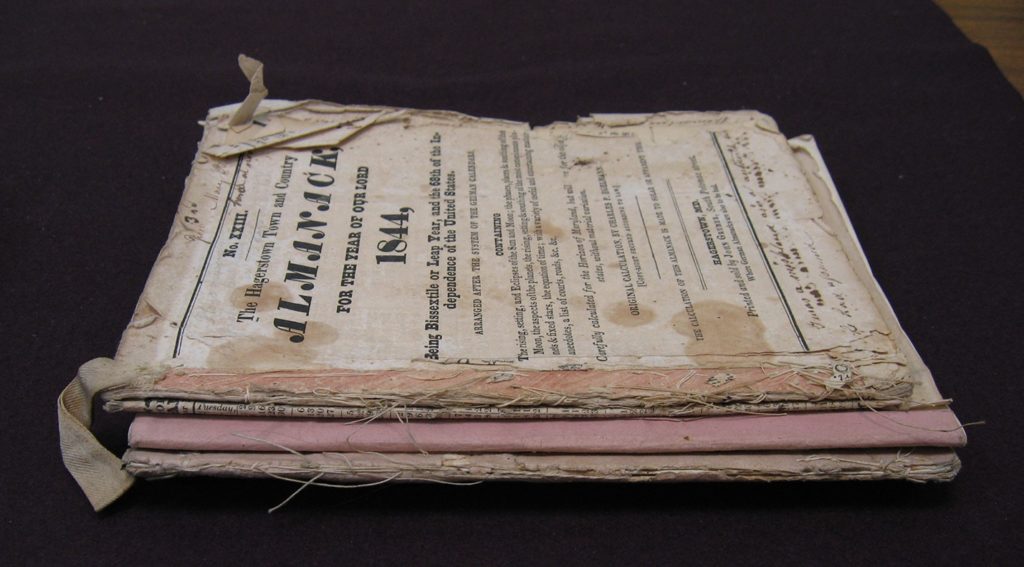
The interaction with physical objects allows for a combination of sensory experiences: touch (soft/hard, worn/unused), smell (sometimes!), sound (the rattle of paper or pages turning), movement-action (sequences/functionality), size and scale (how it feels in the hand/relationship to another thing), materials or composition (repairs/ingenuity/resource scarcity/wealth). The structure of an archival item (an historic book, a toy, or other object) may lead me to borrow that structure for an artwork, adding meaning through form.
Raw primary source materials prompt questions. The search for answers can lead to discoveries, but often nothing definitive. The questions themselves are sometimes the most interesting. The research evokes reactions about the broader story, which in turn lead to possibilities for specific pieces. Are these workable? Which ones hold my attention? Ultimately, I am editor and interpreter. Models, sketches, and more investigations narrow the ideas down until one stands out, and the process of production begins.
The space between what is known from source materials and the questions that arise from their inspection is a place where my imagination likes to wander. It is where words, images, and feelings combine to transport me to a river’s edge at fishing time, or into the heart of a grieving mother. I continue to explore this space and follow where my imagination leads me.
Stephanie Wolff works with paper, text, textile, and the book form. Her current project explores themes of weather, history, and rural life. She was the Fall 2015 Helen M. Salzberg Artist-in-Residence at the Jaffe Center for Book Arts at Florida Atlantic University. In 2013 she was awarded a Creative and Performing Artists and Writers Fellowship at the American Antiquarian Society. Her artist books have won awards and been exhibited in the United States and Germany. They are held in numerous public and private collections.
Website: https://www.stephaniewolffstudio.com/
Instagram: @stephaniewolffstudio

